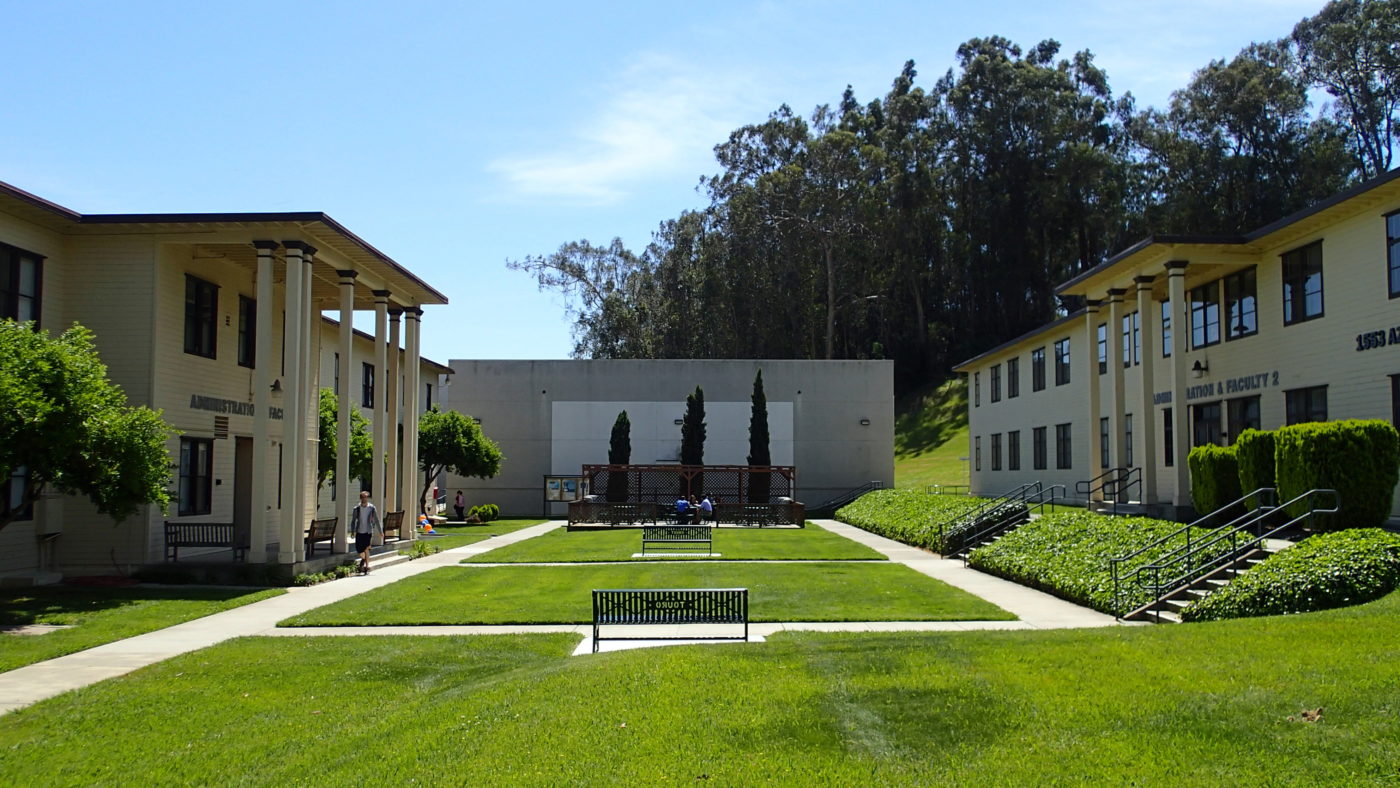Introduction
Are you thinking of attending medical school in California? We’ve discussed multiple California medical schools here on the blog — the entire UC system, UC Riverside, UC Davis, USC Keck, UC San Diego, California Northstate, Touro University, California Health Sciences Unversity and now California University of Science and Medicine, also known as CalMed or CalMed CUSM. Simply put, California is filled with amazing medical schools that can provide you with the kind of world-class education you want as you study to become a medical doctor.
So, what makes California University of Science and Medicine such a great school? The school has a vision to “establish a school of medicine that inspires, motivates and empowers students to become excellent and caring physicians…,” while firmly believing in diversity and academic freedom. CalMed CUSM is currently accredited through the California Bureau for Private Postsecondary Education (BPPE). The school is still in the pre-accreditation process and expects to be fully accredited in 2022.
In today’s blog, we’re discussing everything you need to know about California University of Science and Medicine. That includes:
- Programs Offered at California University of Science and Medicine
- Cost of Attendance (Tuition and Living Expenses)
- Primary and Secondary Applications
- Secondary Essays (With Samples)
- Your Interview at Calmed CUSM
- How International Medical Aid Can Help
Programs Offered at California University of Science and Medicine
CalMed CUSM offers the following programs for prospective students:
- Doctor of Medicine
- Master of Biomedical Sciences
- Office of Research
Doctor of Medicine
The Doctor of Medicine degree has specific learning outcomes, including:
- Medical knowledge
- Patient care
- Professionalism
- Interpersonal communication
- Personal improvement
- System improvement
Learning these outcomes as you study to become a doctor will help you more successfully practice medicine after you’ve graduated. During your four years in the MD program, you’ll learn in Didactic and Clinical phases. The Didactic phases will take place in classroom settings and will teach you the knowledge and skills necessary to treat patients. Instead of sitting through lectures, students teach the curriculum in a “team-based teaching approach.”
This is done by accessing the curriculum online before class, studying it and learning it to teach to others. This intense approach to learning places the responsibility in the students’ hands. The Clinical phases will have you take that knowledge into medical settings, where you’ll shadow doctors and treat patients on a limited basis with a physician’s supervision. The Clinical phase ultimately prepares you for residency, which comes after graduation.
The MD curriculum isn’t available to view on CalMed’s website, but a detailed Q&A on how the curriculum works is provided.
Once you start interacting with patients, you’ll complete your rotations and electives in the following locations:
- Arrowhead Regional Medical Center
- St. Bernardine’s Medical Center
- Temecula Valley Hospital
- Rancho Springs Medical Center
- Inland Valley Medical Center
- Chino Valley Medical Center
- Desert Valley Hospital
- San Bernardino County Department of Behavioral Health
- Walter Reed Hospital
- Loma Linda Veterans Affairs Medical Center
- Montclair Hospital Medical Center
- Master of Biomedical Sciences
Master of Biomedical Sciences
On its own, the Master of Biomedical Sciences (MBS) won’t make you a doctor. But it will enhance your career. It’s ideal for students in the following professions:
- Nursing
- Pharmacy
- Research
- Education
- Physician Assistant
- Biomedical Technology
The MBS program emphasizes “personal learning experiences … to support [your] journey to a career in healthcare.” The program takes 10 months to complete and is comprised of the following courses, as outlined in the MBS Handbook.
- Cell and Molecular Biology (3 credits)
- Biochemistry (2 Credits)
- Anatomy and Histology (1 credit)
- Pathophysiology (4 credits)
- Human Genetics (2 credits)
- Pharmacology (2 credits)
- Neuroscience (3 credits)
- Microbiology and Infectious Disease (3 credits)
- Basic and Applied Immunology (2 credits)
- Critical Thinking in Biomedical Research (2 credits)
- Biomedical Career Pathways (1 credit)
- Ethics (1 credit)
- Statistics and Epidemiology (including Capstone Research Project; 6 credits)
If you maintain a 3.2/4.0 GPA during your first semester in the MBS program, you’ll be invited to apply for the MD program, and you’ll be granted an interview. This doesn’t guarantee you admission into the MD program, but it does provide you with a significant advantage.
Office of Research
The Office of Research at CalMed doesn’t provide a degree, but it’s worth mentioning here because of everything it offers to students. Its mission is to “advance the concepts of biomedical sciences, clinical research and education through inquiry and discovery and to develop the art of applying these concepts to enhance the state of health and reduce the condition of illness.”
The Office of Research includes the following:
- Research facility with instruments
- Support system for grant writing and management
- Internal grants support
- Cost of publication
- Equipment funding on an as-needed basis
- Laboratory manager
More information about the Office of Research can be found on the CUSM website.
Cost of Attendance
So, how much does it cost to attend California University of Science and Medicine? The answer is: not cheap. But it’s not the most expensive medical school out there, either. Tuition costs $63,800 per year. For a four-year education, you’ll pay $255,200.
That only includes tuition and university fees. Your cost of living will be in addition to that. You’ll need to factor in housing (unless you live at home), transportation, food, etc. If it’s something you can’t live without, include it in your cost estimation. We recommend determining your needs on a monthly basis and then calculating four years’ worth of those expenses.
If you can’t afford to attend California University of Science and Medicine, take a deep breath. Many students can’t. That’s why financial aid exists. Through grants, scholarships, federal aid and student loans, you’ll be able to pay for a significant portion of your education, making the leftover amount a much more reasonable number. If you need help applying for financial aid, CUSM has a financial aid department dedicated to helping you.
Class Profile
If you’re interested in California University of Science and Medicine, chances are you’d like to know about its students. These are the stats for the Class of 2024:
- 130 new students
- 3.59 average GPA
- 513 average MCAT score
- 66 male students
- 63 female students
- Students from Asian, White, Hispanic, Black and African American races
- 66 students came from a disadvantaged socioeconomic status
Primary and Secondary Applications
Are you ready to submit your application? Applying to medical school is a unique process since there are two applications: primary and secondary. Your primary application for California University of Science and Medicine will be submitted through AMCAS. The American Association of Medical Colleges created AMCAS as a centralized application service so that applicants could enter all their information at once. Each school to which you apply has access to your AMCAS.
Once you’ve submitted your AMCAS (primary) application, you’ll submit your secondary application. This application will be unique to California University of Science and Medicine. You should receive an email with a link to apply once CUSM has received your AMCAS. It can take up to a month for your AMCAS to be processed.
More detailed information about your primary and secondary applications is available. We’ve covered the topic in-depth, just because applying for medical school can be a long, strenuous and daunting process.
Secondary Essays (with Samples)
Your secondary essays for California University of Science and Medicine are mostly questions from the admissions committee. This is your chance to shine. Show them who you are, and why they should invite you to an interview. In this section, we’re including the essay questions for the 2021 application cycle.
Question #1
“Have you ever been exposed to long periods of significant stress in your life (months at a time)?” If so, how have you coped with it?
My mother was diagnosed with thyroid cancer when she was nine months pregnant with me. Due to how quickly the cancer was progressing, she was induced and gave birth to me. Because I was four weeks away from my due date, I was born healthy and happy. But even though I was, my mother had a long battle ahead of her. Many of the things she had done with my siblings were impossible to do with me. For example, because of her cancer treatments, she was unable to breastfeed me. If her treatments made their way into my system, my little body would have become very sick. Her life-saving treatments could kill me.
Mom beat thyroid cancer, but when I was five, she was diagnosed with breast cancer. It attacked her differently than the thyroid cancer had, but it was just as hard on her body. She fought the cancer and went into remission when I was eight, but the celebration was short-lived. The cancer once again reared its ugly head and ultimately took Mom’s life when I was 11 years old.
Mom was an excellent mother in many ways, but seeing her very sick for most of my childhood was very difficult for me. She was often exhausted, so my two older brothers had to help care for me. Being five and seven years old than me, respectively, Dylan and Josh resented having to care for me. I remember several times when I went hungry because I didn’t want to burden them. I ultimately learned how to make peanut butter and jelly sandwiches so that I wouldn’t need anyone’s help. I sometimes ate that for all three meals in a day on the weekends.
I coped by going over to my friends’ houses for dinner, having meals at school and spending as much time with my mom as I could. I also avoided my brothers because they were mean to me, and I knew early on that I didn’t need negativity in my life. After my mom passed away, I coped with the therapy that my father enrolled me in. I also became very actively involved in school and discovered early on how much I loved science. After all these years, my memories of my mother continue to be a guiding force in my life.
Question #2
Were you a part-time student during your undergraduate education? If you were part-time for more than one semester, please explain why.
This question only applies to you if you were a part-time student for more than one semester while you were studying to earn your bachelor’s degree. You can skip it if you’ve always been a full-time student. Now, there’s nothing wrong with being a part-time student. But medical school is very rigorous and demanding. If you couldn’t handle full-time school during your undergrad years, the admissions committee may want to see proof that you can handle the demands of medical school.
Of course, there are outliers. If you had to work two jobs while being enrolled in school, being a part-time student is understandable. After all, there are only so many hours in the day! Don’t be afraid to honestly answer this question. The admissions committee is trying to get to know you as an applicant and as a person.
Question #3
“Sometimes it is necessary to work in unsettled or rapidly changing circumstances. When have you found yourself in this position? Tell us exactly what you did.”
I had just started working at a new company. I had a paid internship, which was hard to come by in my field. At the end of my second week at my job, a higher-level company executive was let go because of company cuts. He hadn’t done anything wrong. Our boss told us that himself.
I was absolutely terrified that I would be let go next because I was brand new. I was still proving myself. And with paid internships being rare, I was afraid that if I wasn’t let go, I would have to work for free, which I wouldn’t be able to do because I lived on my own and had bills to pay.
Rumors circulated around the company about what would happen. I listened without commenting. I didn’t believe it was my place to engage with employees who had been there for months or years. But hearing those discussions stressed me out.
I had to deal with that stress for the first six weeks of my internship. Eventually, everyone calmed down, and the rumors faded away. I was able to keep my internship on an hourly-paid basis and was later offered a full-time position with the company.
Question #4
Say you’re working on a small group project where you feel like one of your group mates isn’t pulling their weight. How would you respond to this situation?
This is an important question because you’ll work with groups for your entire medical career, starting with your medical school classes. Professors/instructors often break up students into small groups for in-depth discussion on what you’re learning. You’ll also work with fellow doctors, nurses, CNAs, and other healthcare staff throughout your career.
Some of those experiences will be good, but some will challenge you. You’ll work with disagreeable people or put in way more effort than someone else. It’s all a part of life and learning to work with others. So, the admissions committee wants to know how you’ll handle those situations.
Question #5
“If given the opportunity to attend medical school, where do you see yourself in 10 years?”
In 10 years, I see myself as an OB/GYN working at a private practice. If I’m not by then, I’ll be working toward becoming board-certified so that I can offer my patients my very best. I want my knowledge to be so thorough that my patients can come to me for anything related to obstetrics or gynecology.
In addition to general treatment, I want to specialize in reproductive infertility. I had my first daughter when I was 21, but I wasn’t able to conceive again after that. It took three rounds of IVF before my husband and I had fraternal twins. My infertility doctor was amazing, but I wished she was my regular gynecologist as well. It would have simplified things. So, I want to be able to provide that for my patients.
Additionally, I want to work nights and weekends to make it easier for pregnant women who work full-time to not have to worry about making up hours at their jobs. That’s something my mom had to deal with when she was pregnant with my little brother. It was stressful for her.
In short, I want to take my own experiences with women’s healthcare and use them to improve the quality of health care that I’m able to provide for my own future patients. Becoming board-certified, specializing in infertility and working nights and weekends will help me do my best to provide for my patients. That’s where I see myself in 10 years.
Question #6
“Diversity comes in many forms. How do you think you might contribute to the diversity of the class?”
When writing this essay, you could discuss anything that you believe makes you diverse. Perhaps your ancestors came to the United States from Australia, so you have family that lives on the other side of the world. You visit Australia every summer to visit your great aunt and her family.
Maybe you speak four languages. English is your first language, but your dad is Japanese while your mom is Korean, and you took Spanish in high school for your foreign language. You’re multi-lingual!
Maybe your diversity came with experiences that challenged you but helped you grow on a deeper level than you would have otherwise. There are quite a few directions you could take when answering this question. If you start to feel stuck, consider reaching out to us. Here at International Medical Aid, we offer medical school admissions consulting, which includes helping you with your essays (both your personal statement and your secondary essays).
Now that we’ve tackled the essays, let’s look at the interview process you’ll go through if you’re selected for an interview with California University of Science and Medicine.
Interviewing at CalMed CUSM
First off, congratulations if you’ve scored an interview with California University of Science and Medicine. You’ve impressed the admissions committee enough that they want to meet you and get to know you better. They want to see if you’ll be a good fit for CalMed CUSM.
The traditional interview format is used. We talk about it in greater detail in another blog, but essentially, you’ll have two face-to-face interviews with two different interviewers. Each interview will last for 30 minutes. It’s the traditional, nerve-wracking kind that leaves you wondering how you did. But, it’s also the interview method that’s been used for decades and is trusted by many medical schools.
If you want to practice interviewing before your big day arrives, you can practice with us. Mock interview prep is one of the services we offer as part of our medical school admissions consulting.
How IMA Can Help
We’re thrilled that you’re browsing through medical school guides to figure out where you might want to attend medical school. You’re on the right path to pursuing your medical education.
International Medical Aid is here to help you however we can. Your experience in medicine can begin with voluntary healthcare internships abroad, where you travel to an underserved country and shadow medical professionals as they provide treatment and care to individuals who really need it.
Voluntary healthcare internships abroad look great on resumes and will provide you with wonderful experiences that you can write about in your secondary essays. International Medical Aid has been taking students like you on voluntary healthcare internships abroad for years, and we’d love to have you join us on a future trip. More information is available if you’re interested.
IMA is also here to help you with your application. We work with pre-med students on AMCAS / AACOMAS / TMDSAS applications, as well as secondary applications. And, as we mentioned earlier, we can help you prepare for your interviews, should you be invited to one.
Applying to medical school is both an exciting and daunting process. There’s so much to it, and we’re honored that you’d consider us to be part of your journey. While you’re here, we invite you to check out some of our other medical school guides. It’s best to apply to several schools to have the best shot at getting into at least one.
- UC San Diego Medical School
- California Northstate University College of Medicine
- Touro University of California
- CHSU College of Osteopathic Medicine
- UC Davis School of Medicine
- Harvard Medical School
- UC Riverside School of Medicine
- USC Keck School of Medicine
- UT Southwestern Medical School
- Long School of Medicine at UT Health San Antonio
- University of the Incarnate Word School of Osteopathic Medicine
- UT Austin’s Dell Medical School
- UTMB School of Medicine
- McGovern Medical School at UT Health
- Johns Hopkins School of Medicine
- McGovern Medical School at UT Health
- The University of Texas Rio Grande Valley School of Medicine
- UNT Texas College of Osteopathic Medicine
- University of Houston College of Medicine
- Texas A&M College of Medicine
- Johns Hopkins Medical School
- Baylor College of Medicine
- George Washington University School of Medicine
- Vanderbilt University School of Medicine
- St. George’s University School of Medicine
- Lake Erie College of Osteopathic Medicine (in Pennsylvania)
- Sidney Kimmel Medical College at Thomas Jefferson University
- Wake Forest University School of Medicine
- Western University of Health Sciences (in California)
- Drexel University College of Medicine
- Stritch School of Medicine at Loyola University Chicago
- Georgetown University School of Medicine
- Yale School of Medicine
- Perelman School of Medicine
- UCLA Medical School
- NYU Medical School
- Washington University School of Medicine
- Brown Medical School
We wish you the very best on your medical school journey. We’ll be here if you need any help along the way.










